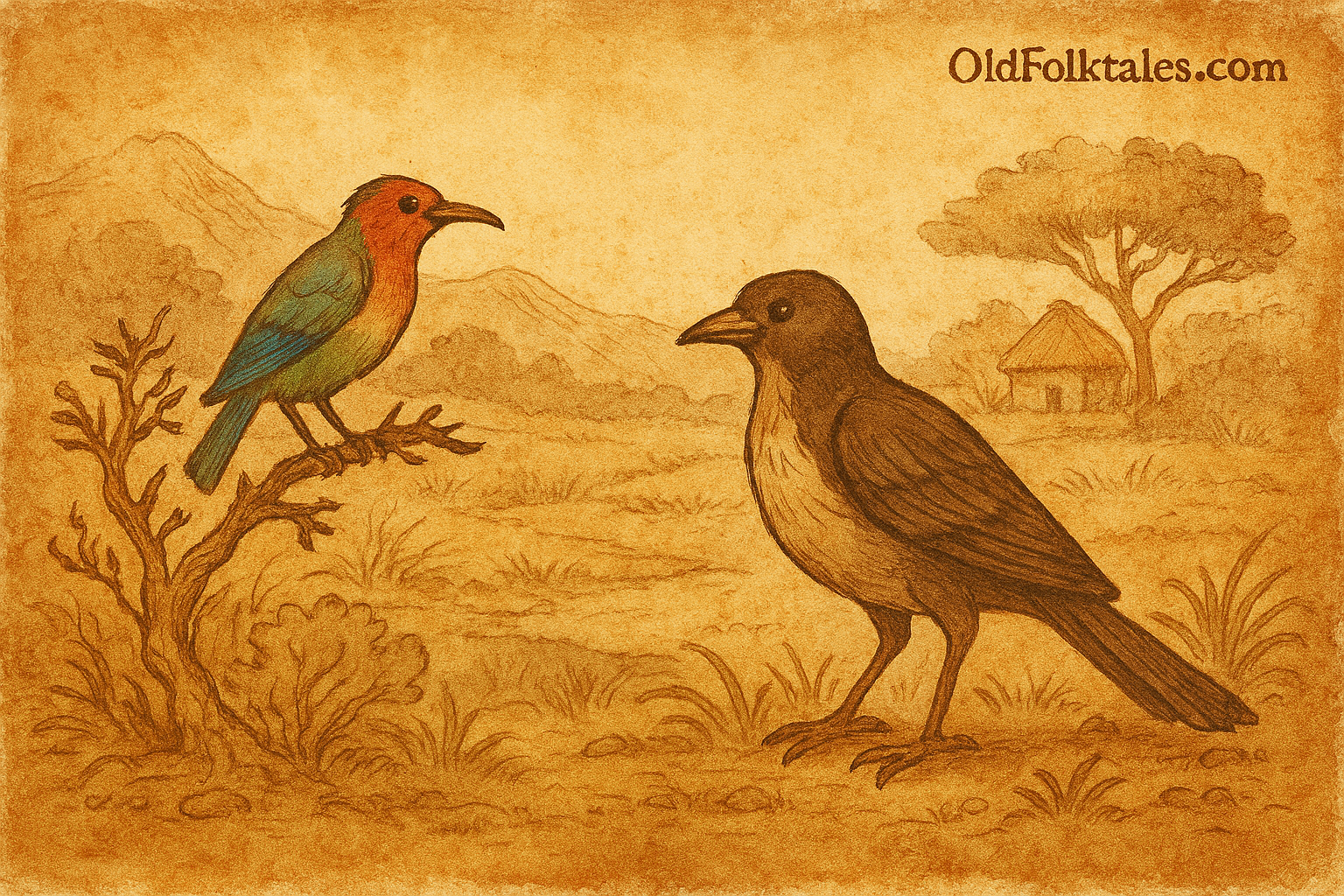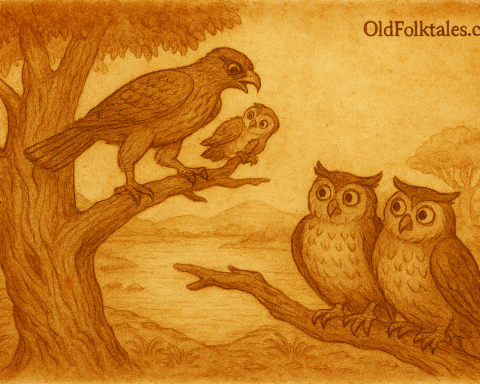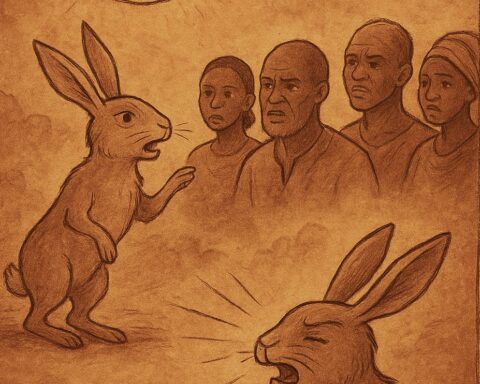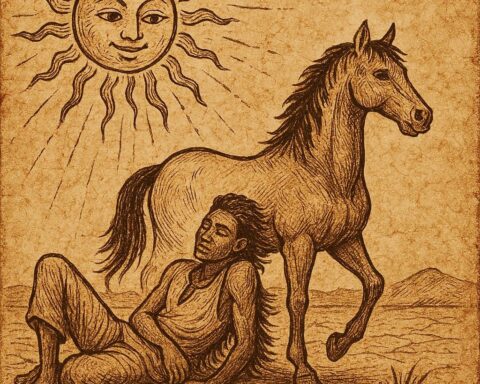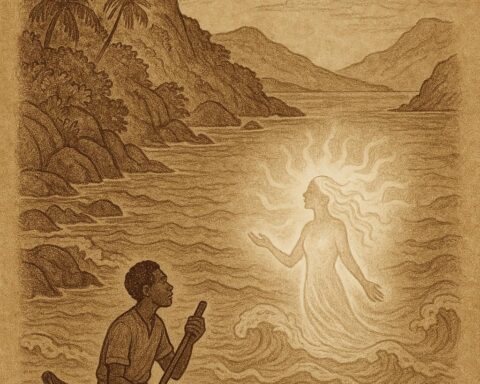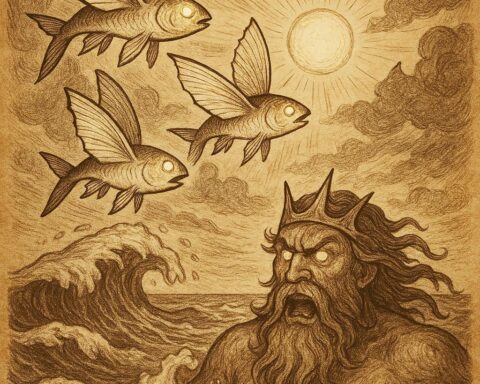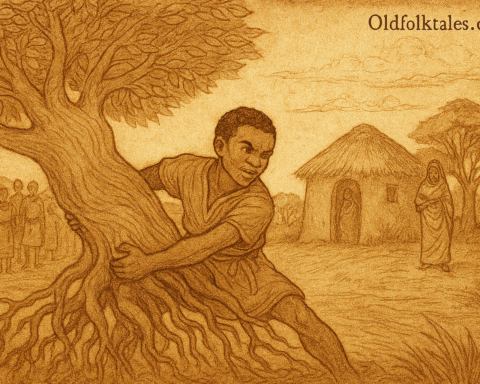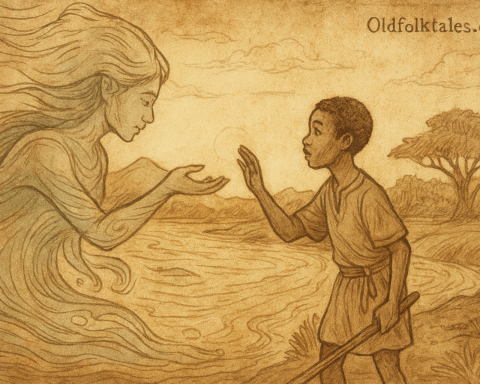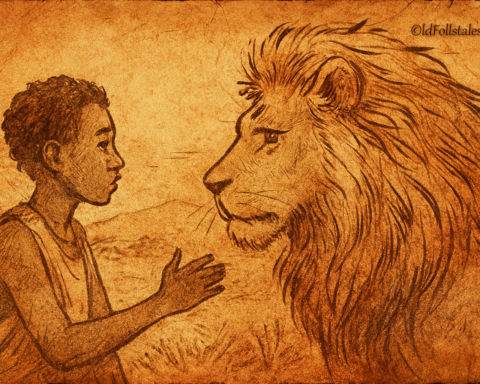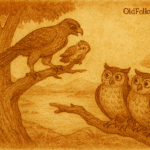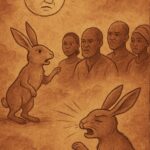In the ancient kingdom of Calabar, during the reign of the legendary King Adam, there lived countless creatures both great and small throughout the lush forests and fertile lands that stretched from the mighty Cross River to the Atlantic coastline. King Adam was renowned not only for his wisdom and fair rule, but also for his deep curiosity about the natural world that surrounded his domain.
One day, as the king sat in his royal court surrounded by carved ivory and colorful kente cloth, a fascinating question arose in his mind. He wondered whether there existed any animal or bird capable of enduring hunger for an extraordinarily long period. Such a creature, the king declared to his council of advisors, would demonstrate the kind of resilience and determination that would make them worthy of being appointed as a chief among their own species.
Word of the king’s challenge spread quickly throughout the kingdom, carried by the drums that echoed across the forest canopy and whispered along the riverbanks by fishermen and traders. Among those who heard this announcement were two very different birds who happened to be the closest of friends despite their contrasting appearances and lifestyles.
Also read: The Election of the King Bird
The first was the ‘Nsasak bird, a tiny creature no larger than a child’s fist, but blessed with the most spectacular plumage imaginable. His breast shimmered with brilliant shades of emerald green and ruby red that caught the sunlight like precious jewels. Blue and yellow feathers adorned his wings in intricate patterns, while his neck was encircled by a band of vibrant red that made him appear to wear a royal collar. This small but stunning bird sustained himself primarily on the sweet, oil-rich kernels of ripe palm nuts, which he would crack open with his small but surprisingly strong beak.
His companion was the Odudu bird, a creature of entirely different proportions and appearance. Standing about the size of a magpie, the Odudu bird possessed an abundance of feathers that gave him an impressive silhouette, though beneath this feathery exterior lay a surprisingly thin and delicate body. His long, elegant tail swept behind him as he moved, and his coloring was more subdued, a sophisticated combination of deep black and rich brown, offset by a cream-colored breast that gleamed softly in the dappled forest light. Unlike his small friend, the Odudu bird was a hunter of insects, particularly favoring the plump grasshoppers that leaped through the tall grass, and the crickets that filled the night air with their rhythmic chirping.
Despite their differences in size, diet, and appearance, the ‘Nsasak and Odudu birds had formed an unbreakable bond of friendship. They spent their days together, sharing stories, exploring the forest, and supporting each other through the challenges of life in the wild. When they learned of King Adam’s challenge, both birds immediately recognized the incredible opportunity it presented.
“We must both try for this honor,” declared the ‘Nsasak bird, his tiny chest puffed with determination.
The Odudu bird nodded enthusiastically, though privately he felt quite confident about his chances of victory. After all, he reasoned, he was so much larger than his small friend, surely he possessed greater reserves of strength and endurance. With this confidence filling his heart, the Odudu bird boldly announced that he was prepared to fast for seven full days without consuming even a single morsel of food.
King Adam, intrigued by the birds’ enthusiasm and determination, decided to create a fair and controlled test of their endurance. He instructed both birds to construct houses where they could be confined during the trial period. These dwellings would be carefully inspected by the king himself to ensure that no trickery or outside assistance would be possible during the fasting period.
Both birds set to work immediately, gathering twigs, leaves, mud, and other natural materials to build their temporary homes. The Odudu bird, confident in his superior size and strength, constructed a straightforward but sturdy dwelling, focusing on comfort and security for the long ordeal ahead.
The ‘Nsasak bird, however, approached his construction project with the cunning intelligence that often compensates for small size in the natural world. As he worked, he realized with growing concern that his tiny body could never survive seven days without food, the challenge would surely kill him. But rather than abandon his dream of becoming a chief, the clever little bird devised an ingenious plan.
Working with the precision and skill that only the smallest creatures possess, the ‘Nsasak bird created a tiny opening high up in the wall of his house. The hole was so small that even his diminutive form could barely squeeze through it, and he carefully camouflaged it with bits of bark, leaves, and mud so that it became virtually invisible to any observer.
When King Adam arrived to conduct his official inspection of the two houses, he examined every inch of both structures with the thoroughness of a monarch who understood the importance of fair play. He tested the walls, checked the roofing, and scrutinized every joint and seam. The Odudu bird’s house met with his approval, sturdy and secure with no apparent weaknesses. The ‘Nsasak bird’s dwelling also passed inspection, as the tiny hidden opening was so expertly concealed that even the king’s keen eyes failed to detect it.
Satisfied that both houses were escape-proof, King Adam declared the trial officially begun. The two birds entered their respective homes, and the doors were securely fastened from the outside with strong ropes and wooden bars that would make escape impossible, or so it seemed.
As the first night fell over the kingdom, the ‘Nsasak bird waited until he was certain that all human activity had ceased and the world was deep in slumber. Then, working carefully in the darkness, he removed the camouflage from his secret opening and squeezed through the tiny hole. His small size, which had seemed like such a disadvantage, now proved to be his greatest asset.
Each morning at the first hint of dawn, while the world still lay shrouded in mist and shadows, the clever little bird would emerge from his hiding place and fly far from the royal compound. He would spend his days in distant corners of the forest, feasting on his beloved palm nuts, basking in the warm sunshine, and enjoying complete freedom while maintaining the utmost caution to avoid being seen by any farmers, hunters, or other humans who might report his activities to the king.
As the sun began its descent toward the horizon each evening, the ‘Nsasak bird would make his way back to his prison, timing his return perfectly to arrive just as darkness fell. He would slip through his secret entrance, carefully replace the camouflage, and settle in for the night as if he had never left.
To maintain the illusion of his confinement and suffering, the cunning bird would call out to his friend the Odudu bird each night, asking about his condition and offering encouragement. “My dear friend,” he would say, his voice carefully modulated to sound weak and strained, “are you feeling the pangs of hunger? You must bear it well if you wish to win this contest, for I myself am feeling quite strong still, and I believe I can endure this trial for many more days.”
The Odudu bird, trapped genuinely in his house and growing weaker with each passing day, would respond with what strength he could muster. “I am… managing, my friend,” he would whisper, his voice growing fainter each night. “Though I confess… the hunger grows… more difficult to bear.”
As the days progressed, the Odudu bird’s responses became increasingly weak and infrequent. His large body, which had seemed like such an advantage, now worked against him as it required more energy to sustain than his small friend’s compact form. By the fifth day, his voice was barely audible. By the sixth day, he could manage only the faintest whisper.
On the seventh night, when the ‘Nsasak bird called out his usual inquiry, only silence answered him. The little bird’s heart filled with genuine sorrow as he realized what had happened. His dear friend, his loyal companion, had succumbed to the very trial that the ‘Nsasak bird was winning through deception. Though he felt terrible about his friend’s fate, he knew there was nothing he could do to help without revealing his own trickery and forfeiting any chance of achieving his dream.
When the seven days had finally elapsed, King Adam arrived with great ceremony to determine the winner of his contest. A crowd of courtiers, advisors, and curious citizens gathered around as the king ordered both doors to be opened simultaneously.
From the ‘Nsasak bird’s house came an explosion of joyful song as the tiny bird burst forth, his colorful feathers gleaming brilliantly in the morning sunlight. He perched on a nearby branch and sang with such vigor and melody that the entire crowd burst into amazed applause. His voice rang clear and strong, showing no signs of weakness or suffering.
But from the Odudu bird’s house came only silence and the musty smell of death. When the king’s servants peered inside, they found a heartbreaking sight. The once-proud Odudu bird lay motionless on the floor, his body so reduced by starvation that little remained except scattered feathers and bones. Even in death, the ants had already begun their work, cleaning away what little flesh remained.
King Adam, both impressed by the apparent winner and saddened by the loss of the Odudu bird, made his official proclamation. He declared the ‘Nsasak bird to be the head chief of all small birds throughout his kingdom, a title that would be honored for all generations to come.
The legacy of this contest lives on to this very day throughout the Ibibio regions of Nigeria. Young boys who practice with their bows and arrows are offered special prizes sometimes even a valuable female goat—if they manage to successfully shoot a ‘Nsasak bird. This tradition exists not out of cruelty, but as recognition of the ‘Nsasak bird’s status as king of all small birds and acknowledgment of the extraordinary skill required to hit such a tiny, clever, and quick-moving target.
The ‘Nsasak bird’s reputation for cunning and intelligence makes him one of the most challenging quarry for young hunters, and successfully bringing one down is considered a mark of exceptional marksmanship and patience—qualities highly valued in the culture of the region.
The Moral of the Story
This tale teaches us that intelligence and resourcefulness can triumph over physical advantages, but it also presents a complex moral lesson about the costs of deception. While the ‘Nsasak bird’s cleverness secured him victory and leadership, it came at the price of his friend’s life and was built on dishonesty. The story suggests that success achieved through cunning may bring rewards, but also carries the burden of hidden guilt and the knowledge that others may have suffered for our gains.
Knowledge Check
Q1: What does the ‘Nsasak bird represent in Nigerian storytelling tradition about leadership and success? A: The ‘Nsasak bird represents the archetypal clever underdog who uses intelligence to overcome physical disadvantages. In Nigerian folklore, this character type demonstrates that mental agility and resourcefulness can be more valuable than size or apparent strength in achieving success.
Q2: How does King Adam’s test reflect traditional African values about leadership qualities? A: King Adam’s endurance test reflects African cultural values that prize resilience, self-discipline, and the ability to endure hardship as essential leadership qualities. The king seeks leaders who can withstand difficult circumstances, viewing such endurance as crucial for guiding others through challenges.
Q3: What is the symbolic significance of the Odudu bird’s death in the context of this Nigerian folktale? A: The Odudu bird’s death represents the tragic cost of honest effort in an unfair competition. His demise symbolizes how good intentions and genuine strength may not prevail when facing deception, highlighting the complex moral consequences of the ‘Nsasak bird’s trickery.
Q4: How does the hunting tradition mentioned at the story’s end connect to the tale’s themes? A: The hunting tradition honors the ‘Nsasak bird’s cunning by making him a challenging target for young archers, transforming his deceptive victory into a test of skill. This reflects how Nigerian culture acknowledges intelligence and wiliness as valuable traits, even when achieved through morally ambiguous means.
Q5: What role do the birds’ different physical characteristics play in the story’s message about advantage and disadvantage? A: The contrasting physical traits emphasize that apparent advantages (the Odudu bird’s size) may become disadvantages under certain circumstances, while seeming disadvantages (the ‘Nsasak bird’s tiny size) can become assets when combined with clever thinking.
Q6: How does this folktale reflect Nigerian cultural attitudes toward cunning and survival strategies? A: The story reflects a pragmatic cultural understanding that survival sometimes requires cunning and that intelligence is a legitimate tool for overcoming disadvantages. However, the tragic outcome also suggests awareness of the moral complexities and potential costs of deceptive strategies.
Source: Traditional Nigerian folktale, Ibibio and Calabar regions
